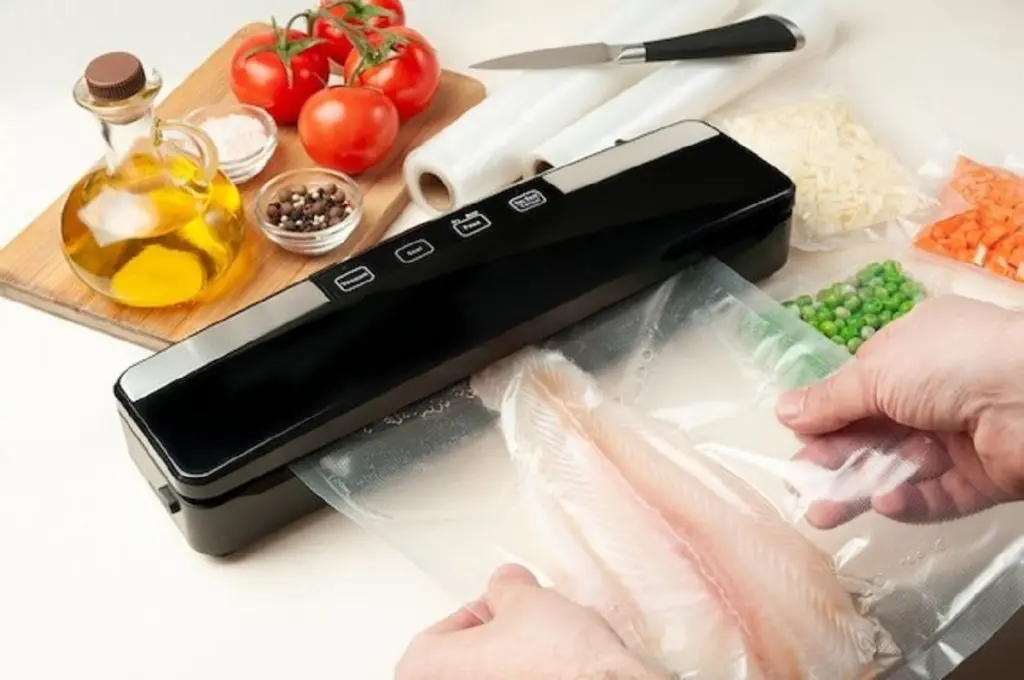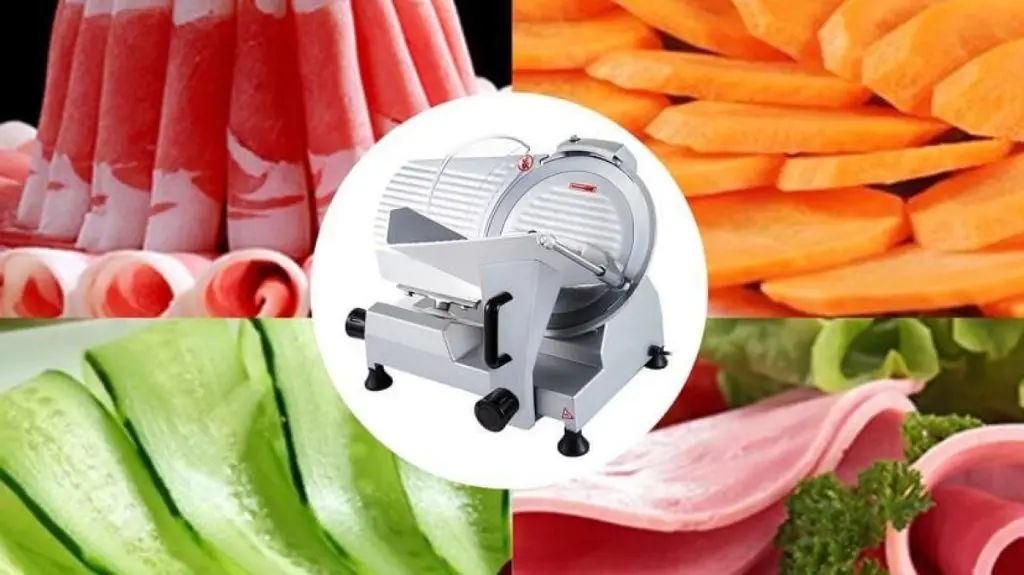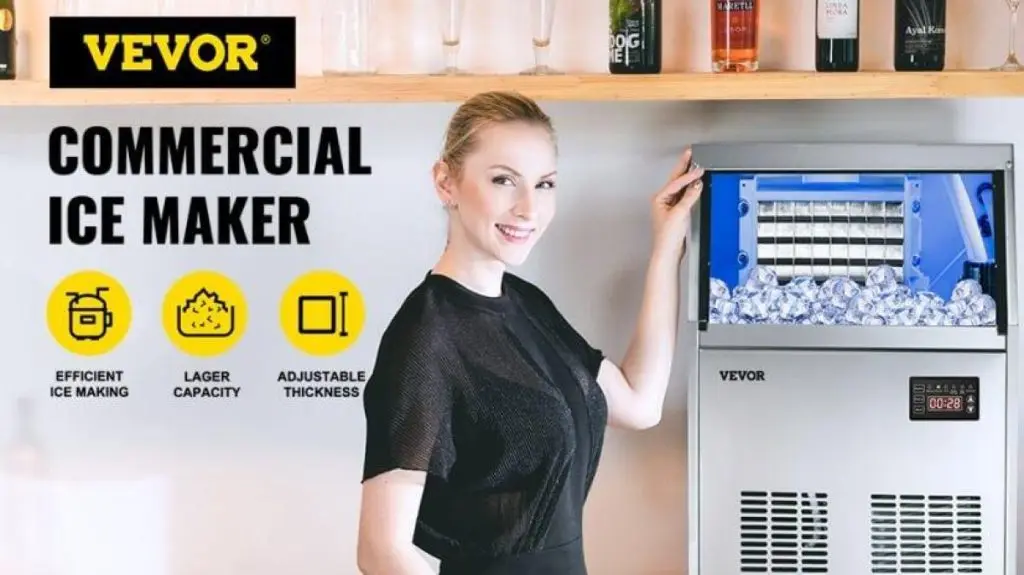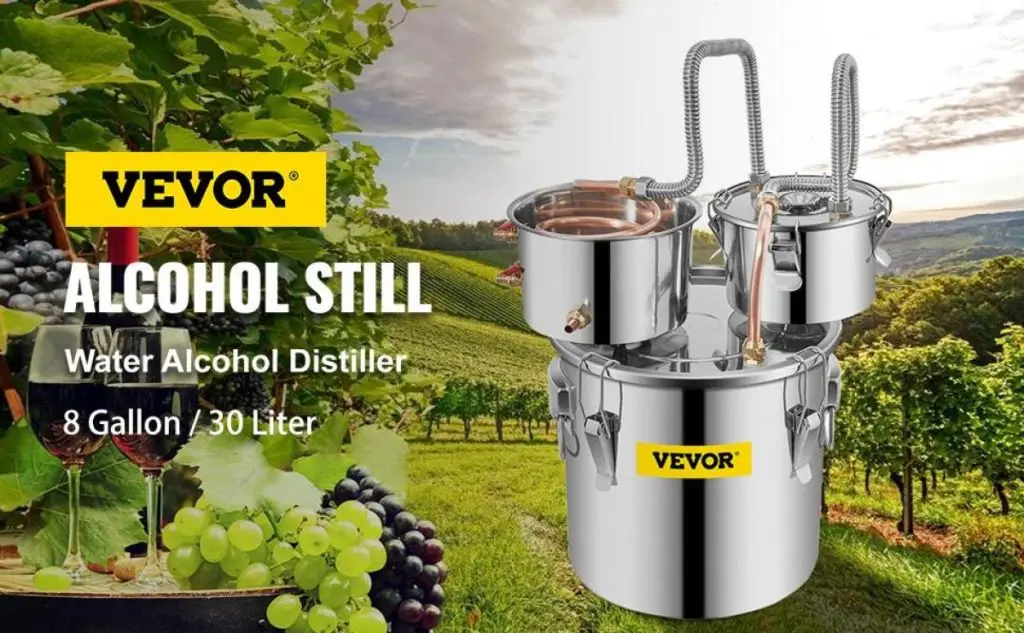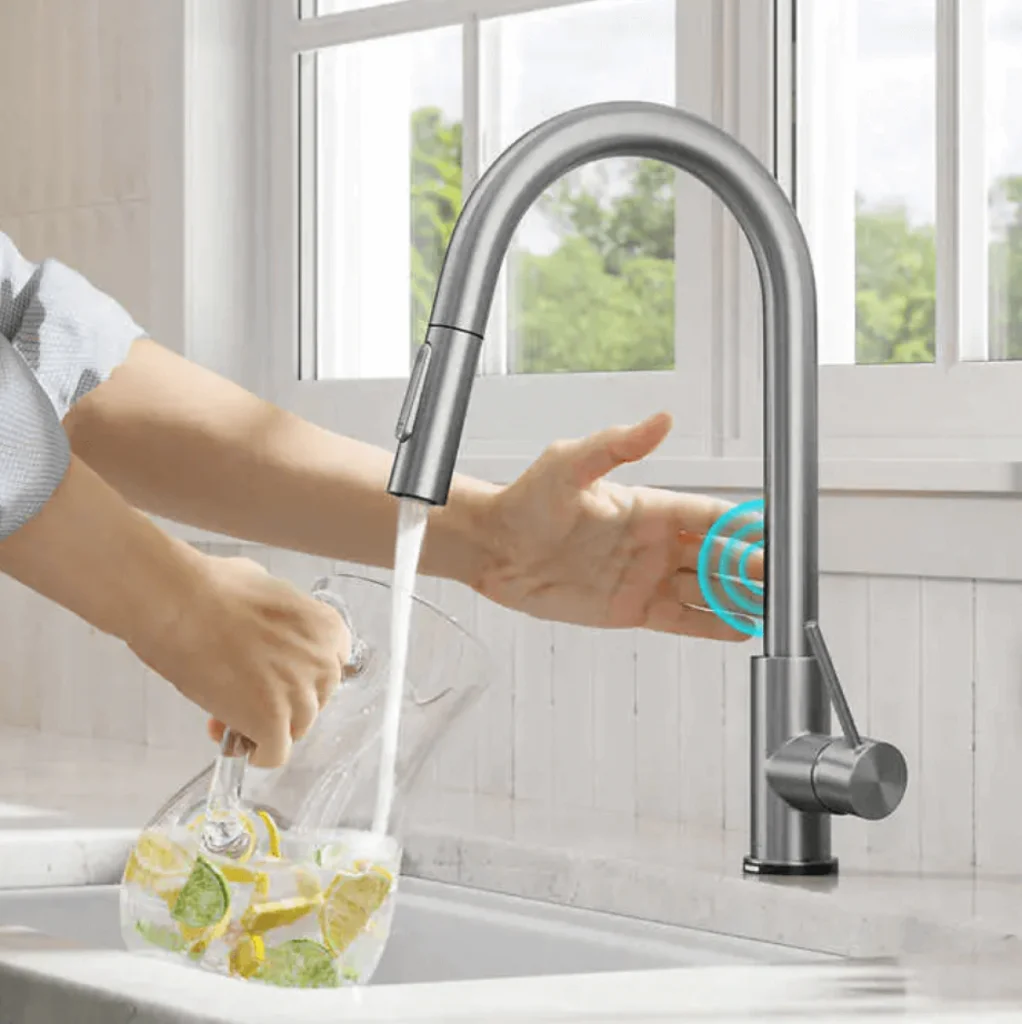Food waste is a major problem of this age. Food wastage is not only a loss of resources but also detrimental to the environment. Food waste makes up for around 8 to 10% of the world’s greenhouse gas emissions. On top of all that, food waste takes a toll on your pocket as well, making food preservation a necessity.
This is where vacuum sealers come in. They help extend the shelf life of food, reducing waste and maintaining freshness. If you are thinking of adding a vacuum sealer to your kitchen, it is essential that you know how does a vacuum sealer work so that you can ensure optimum food preservation. In this comprehensive guide, you are going to learn all about vacuum sealers.
Succeeding sections will delve into the following topics:
- What is a Vacuum Sealer?
- Components of a Vacuum Sealer: Understanding the Machine
- How Does a Vacuum Sealer Work?
- Benefits of a Vacuum Sealer: Preserving Freshness and Reducing Waste
- Enjoy Longer-Lasting Freshness with Our Advanced Vacuum Sealer
So, let’s get started!
What is a Vacuum Sealer?
A vacuum sealer is a versatile device that helps combat food wastage by extending its shelf life and preserving its flavors and nutrient profile. At its core, a vacuum sealer is a device that removes air from a package or container, creating an airtight seal that effectively inhibits the growth of microorganisms responsible for food spoilage. This airless environment not only prevents the proliferation of bacteria and mold but also hinders oxidation, a chemical reaction that causes food to lose its vibrant colors and develop unpleasant odors.
Vacuum sealers empower individuals to take control of their food storage, preserving the flavors and nutritional value of their culinary treasures.
Components of a Vacuum Sealer: Understanding the Machine
Vacuum sealers consist of various components, each playing a pivotal role in creating effective vacuum sealing for maximum food preservation.
1. Lid Assembly
The lid assembly houses the sealing mechanism and provides access to the sealing chamber. It comprises the lid itself, a hinge for opening and closing, and a locking mechanism to ensure an airtight seal.
2. Vacuum Pump
The vacuum pump is responsible for extracting air from the sealing chamber and the bag or container. This powerful motor generates suction, removing the oxygen that leads to food spoilage and creating a vacuum environment that prevents the oxidation process, extending the shelf life of your food and preserving its nutrient and flavor profile.
3. Sealing Chamber
At the heart of the vacuum sealer lies the sealing chamber. This chamber, typically made of stainless steel or durable plastic, is where the bag or container is placed during the vacuum sealing process.
4. Sealing Strip
The sealing strip is a thin layer of heat-activated material. The sealing strip heats up and melts the plastic on both sides of the sealing bag and fuses them together. This seal helps preserve the vacuum inside by preventing air from entering inside.
5. Heating Elements
The heating elements are responsible for heating the sealing strip. Besides that, additional heating elements might also be present in a vacuum sealer machine to assist in the sealing process.
6. Control Panel
The control panel serves as the command center, providing the interface for operating the vacuum sealer. It typically features buttons or a touchscreen display for selecting functions, adjusting settings, and monitoring the vacuum sealing process.
7. Lid Release Button
The lid release button, a simple yet crucial component, allows for the easy opening of the lid assembly.
8. Bag Cutter
The bag cutter, a convenient accessory, facilitates the trimming of excess bag material after the sealing process. This integrated blade, typically located near the sealing area, provides a clean and precise cut, ensuring tidy and organized storage.
9. Hose
The hose, a flexible conduit, connects the vacuum pump to the sealing chamber, allowing for the efficient extraction of air. This tube, often made of durable plastic or silicone, ensures that the vacuum sealing process is conducted effectively.
10. Canister Sealer
The canister sealer, an optional attachment, expands the versatility of the vacuum sealer, enabling it to seal food canisters and jars.
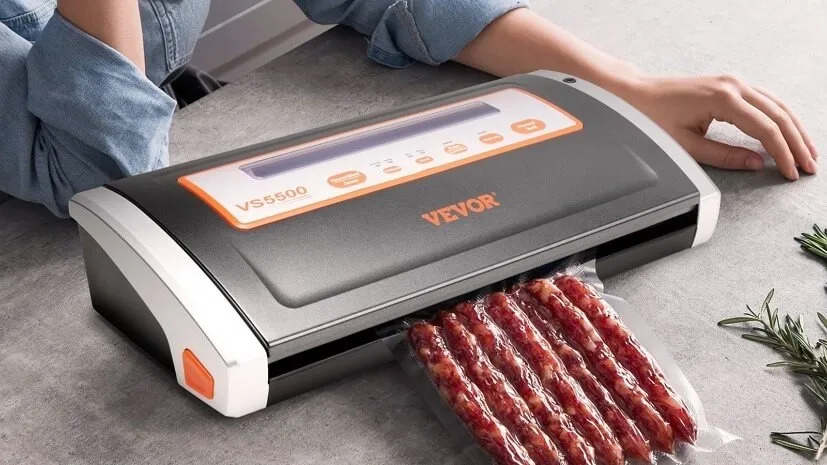
How Does a Vacuum Sealer Work?
Vacuum sealers are very easy to use. Here is how you can vacuum seal things using a vacuum sealer:
Step 1: Place the Food in a Bag or Container
You begin the vacuum sealing process by placing the food item in a vacuum sealer bag or container. For solid food items, such as meats, seafood, and fruits, bags are ideal. For liquids, soups, and stews, vacuum sealer containers are the preferred choice.
Step 2: Position the Bag in the Sealing Chamber
Position the bag filled with food in the sealing chamber, ensuring that it lies flat and does not obstruct the vacuum pump’s intake.
Step 3: Close the Lid and Engage the Locking Mechanism
Once the food is nestled within the sealing chamber, firmly close the lid. Engage the locking mechanism to ensure an airtight seal, preventing air from escaping during the vacuum sealing process.
Step 4: Select the Vacuum and Seal Settings
With the lid secure, it’s time to command the vacuum sealer to perform its magic. Select the appropriate vacuum setting based on the type of food being preserved. Use a gentle vacuum for delicate items and a stronger one for sturdy items. Similarly, use dry mode for dry products and moist mode for items with extra moisture content, such as fish.
Step 5: Initiate the Vacuum Sealing Process
Press the designated button to activate the vacuum sealing process. The vacuum pump springs into action, extracting air from the sealing chamber and the bag or container. As the air is removed, the food condenses, expelling excess oxygen and creating a vacuum environment that inhibits spoilage.
Step 6: Activate the Sealing Mechanism
Once the desired vacuum level is achieved, the sealing mechanism kicks into action. The heating element heats the sealing strip, melting and fusing the edges of the bag or container, creating an airtight seal that locks in freshness.
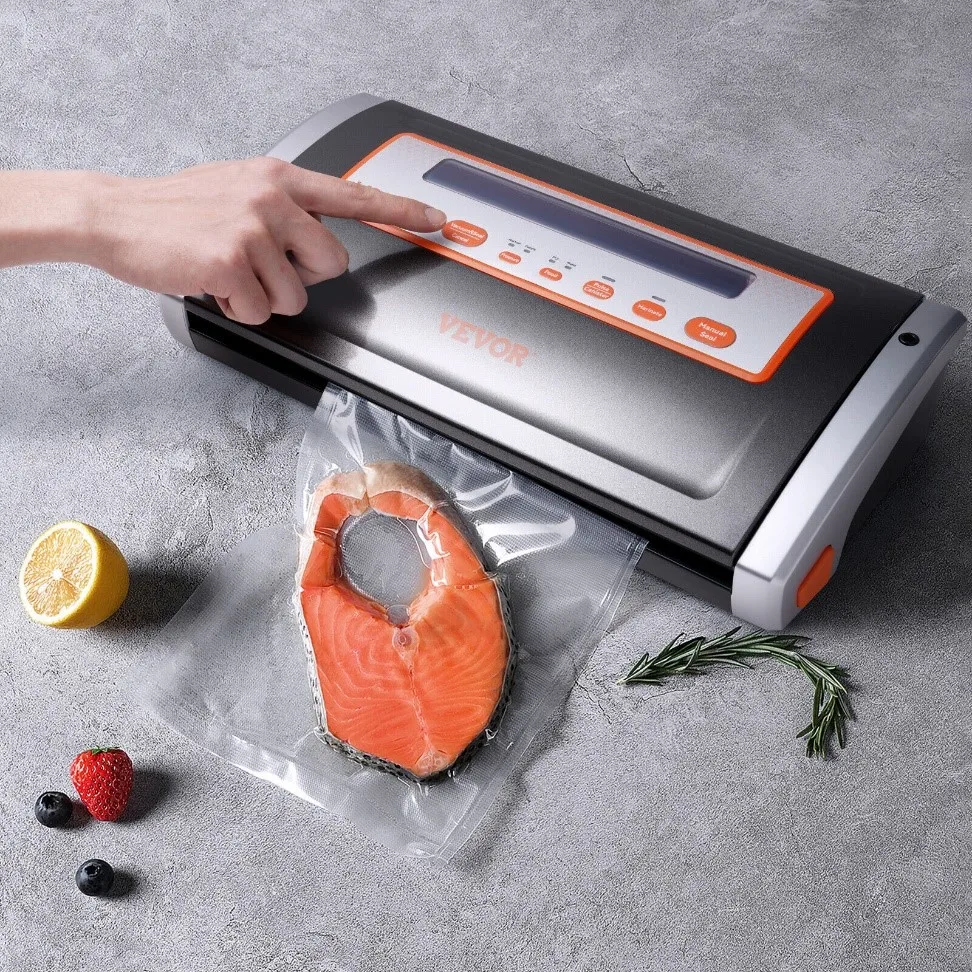
Benefits of a Vacuum Sealer: Preserving Freshness and Reducing Waste
Vacuum sealers have revolutionized the way we preserve food, offering a plethora of benefits that extend beyond simply extending shelf life.
1. Enhanced Freshness and Extended Shelf Life
By removing air, the catalyst for oxidation and bacterial proliferation, vacuum sealers extend the shelf life of food items such as fresh meat, seafood, fruits, vegetables, and even cooked meals by up to five times. This remarkable preservation capability allows individuals to enjoy their favorite foods for a longer period, reducing the need for frequent grocery trips and minimizing food waste.
2. Reduced Freezer Burn and Preserving Texture
Vacuum sealers effectively combat freezer burn, the culprit behind dry, discolored, and unappetizing frozen foods. By eliminating air and creating an airtight seal, vacuum sealers prevent freezer burn and preserve the moisture and texture of frozen foods, ensuring that every culinary creation emerges from the freezer as flavorful and enticing as the day it was vacuum-sealed.
3. Marinating Made Easy and Flavorful
By removing air, vacuum sealers accelerate the marinating process, allowing flavors to penetrate deep into the food in a fraction of the time traditionally required.
4. Safeguarding Sous Vide Cooking
Vacuum-sealed bags ensure precise temperature control during sous vide cooking, allowing you to achieve consistent results with meats, fish, and vegetables. The vacuum-sealed environment eliminates the risk of water entering the bag, maintaining the integrity of your ingredients.
5. Protecting Food from Contamination
Their airtight seal prevents odors, bacteria, and moisture from entering the packaging, ensuring that food remains safe and wholesome for extended periods.
6. Organized and Space-Saving Storage
Vacuum-sealed bags and containers help optimize food storage with their compactness. This organization not only simplifies food storage but also enhances the aesthetics of your kitchen.
7. Environmental Benefits and Reduced Waste
By extending the shelf life of food, vacuum sealers help minimize food waste, lessen landfill contributions, and conserve the resources associated with food production and transportation.
Enjoy Longer-Lasting Freshness with Our Advanced Vacuum Sealer
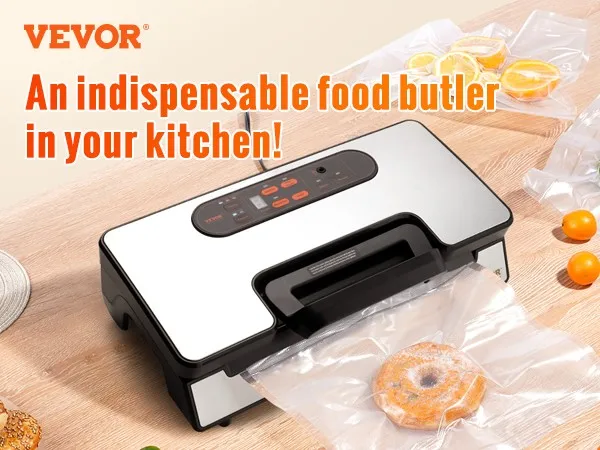
At VEVOR, we offer top-of-the-line vacuum sealers at highly affordable prices. Whether you’re in need of a vacuum sealer for your household kitchen or a commercial setting, we have you covered. Our collection includes both chamber vacuum sealers and non-chamber vacuum sealers, allowing you to choose the one that best meets your needs.
Our most recommended vacuum sealer is this 80Kpa, 130W Powerful Vacuum Sealer, which is a versatile machine offering both dry and moist vacuum sealing modes. It also features both automatic and manual air sealing, a built-in sealing bag cutter, and an external hose. If you are looking for a vacuum sealer that will take care of all your vacuum sealing needs, you need to check this one out.
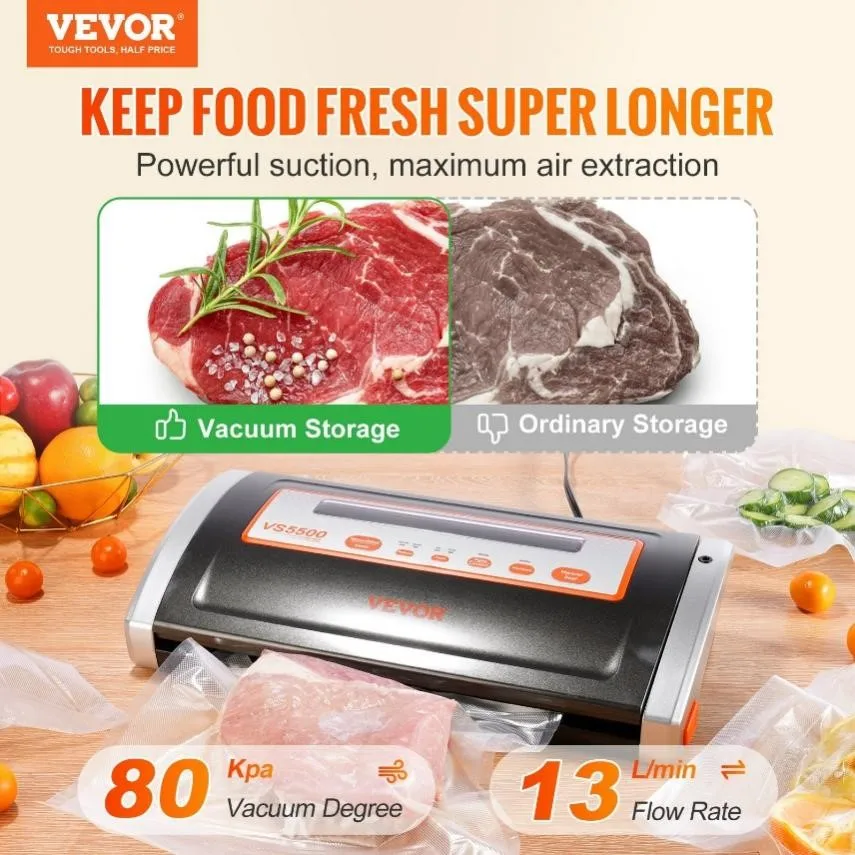
Conclusion
Vacuum sealers have become an indispensable kitchen tool, extending the shelf age and preserving the freshness and flavors of food items. Their airtight seal effectively inhibits the growth of microorganisms responsible for spoilage, ensuring that every bite is as delectable as the day it was vacuum sealed.
By learning how different components of a vacuum sealer work in harmony to create perfect vacuum sealing, you can confidently start vacuum sealing food items by following the step-by-step guides provided in the article. Beyond extending the shelf life of food items, vacuum sealers offer many other benefits, such as minimizing food wastage, safeguarding the nutrient and flavor profile of food, sous vide cooking, and optimizing storage.
Embark on a culinary journey of enduring freshness and sustainable living with VEVOR’s Vacuum sealer.

